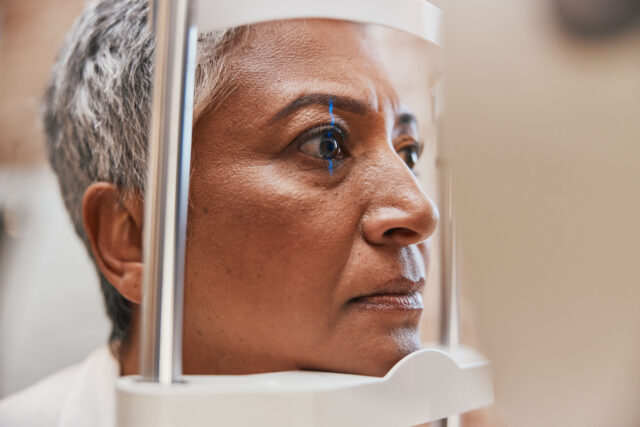
Innovative technology and pharmacological treatments are advancing how optometrists are diagnosing, treating, and managing glaucoma. This group of chronic eye conditions causes intraocular pressure and damage to the optic nerve, which can lead to vision loss if left untreated. By keeping current with glaucoma research, advancements and technologies optometrists are staying at the forefront of preventing blindness in glaucoma patients.
Glaucoma Pharmaceutical Advancements
Medications, laser therapies, and surgical therapies are the primary treatments for glaucoma. Drugs for glaucoma have seen significant progress in recent years. Traditional medications such as beta-blockers and prostaglandin analogs have been staples in glaucoma management.
Newer options like Rho-kinase inhibitors and nitric oxide-based therapies are providing additional avenues for treatment. These compounds work to lower intraocular pressure, a key risk factor in glaucoma progression, by either reducing fluid production or increasing its outflow from the eye. Drugs that increase outflow from the eye include latanoprost (Xalatan), travoprost (Travatan Z), tafluprost (Zioptan), bimatoprost (Lumigan) and latanoprostene bunod (Vyzulta).
Promising new glaucoma drugs that function independently of interocular pressure (IOP), include brimonidine tartrate, an alpha-2 adrenergic agonist, that has shown in human trials to effectively reduces IOP when applied topically through a dual-action mechanism.
Glaucoma Monitoring Techniques
Monitoring techniques have also evolved to enhance the management of glaucoma. Optometrists now have access to cutting-edge tools like optical coherence tomography (OCT) and visual field testing, allowing for earlier detection of disease progression and more personalized treatment plans. These technologies enable optometrists to closely monitor changes in the optic nerve and retinal thickness, providing valuable insights into the effectiveness of treatment strategies.
Remote monitoring and virtual consultations have enabled optometrists to stay connected with patients. Optometrists are able to better manage the continuity of care and timely adjustments to treatment plans with telemedicine as a valuable tool in glaucoma management.
Many optometrists are embracing these glaucoma advancements in technology, treatments, and therapies through research study and continuing education. By staying informed and providing patients with the latest glaucoma management strategies, optometrists can provide the best possible glaucoma patient outcomes.
Sources: National Library of Medicine, NLM: Detecting Glaucoma, Modern Optometry



